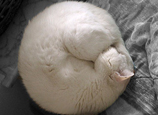
 |
| Mount Wuyi |
The “Hanging Boat-Shaped Coffins,” the “Hongqiao Board” and the relics of the 48-hactare ancient Han Dynasty City, in which the king of the ancient Min Yue nationality lived, are the unique practical evidence of the ancient civilizations which disappeared 3,000 years ago. The Han Dynasty City Relics which was built in the 1st century BC was the royal palace of the Min Yue Kingdom in the Western Han Dynasty. It covers 220,000 square meters and is one of the best-preserved city relics in southern China. The Hanging Boat-Shaped Coffins are already more than 3,750 years old, the oldest hanging coffins ever discovered in China. Among the funerary objects of the coffins, China’s oldest cotton dry-goods were found. In addition, an ancient porcelain kiln from the Song Dynasty and a royal tea park from the Yuan Dynasty were also found on the mountain.
Heritage value
According to the first point of the first article regarding cultural heritage stated in the “Convention Concerning the Protection of the World Cultural and Natural Heritages,” buildings, tablet carvings and paintings, archeological parts and structures, inscriptions, caves or a mixture of the previously mention items which have outstanding universal value in terms of history, art and science are said to have world cultural heritage, and according to the third point of the second article regarding natural heritage in the same convention, geologic and natural geographic structures or the clearly defined ecological zones of endangered animals and plants are said to have world natural heritage. Therefore, Mount Wuyi is completely in accordance with the natural and cultural heritage definitions stated in the convention for its typical Danxia landforms, unique and abundant biological resources, and rich historical and cultural deposits.


















 Wild Siberian tiger kills cattle in NE China
Wild Siberian tiger kills cattle in NE China


![]()
